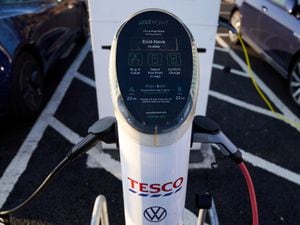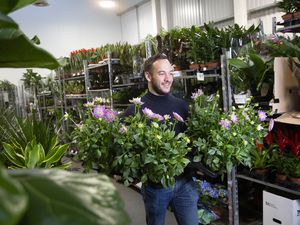Behind the scenes: Express & Star goes inside the Jaguar Land Rover engine factory
It is the biggest and busiest engine factory in the UK, and it is set to get even busier.
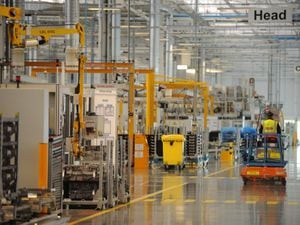
Around 1,800 people now work at Jaguar Land Rover's Engine Manufacturing Centre, or EMC, on the i54 site to the north of Wolverhampton, on the border with South Staffordshire.
It is just six years since ground was broken on the project, originally envisaged as an 800,000 sq ft plant that would cost £355 million and employ up to 750 people.
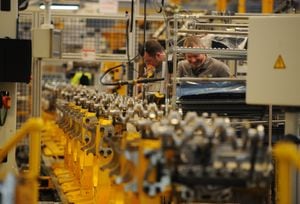
Two major expansion decisions later, it now extends across more than two million sq ft, from the M54 motorway in the north to Wobaston Road to the south. That's the equivalent of around 28 football pitches.
The West Midlands-based luxury car maker has so far invested a cool £1 billion in the site, which was confirmed as the UK's busiest and biggest engine factory earlier this year as figures revealed 305,907 of its petrol and diesel engines rolled off the i54 production line.
But few people other than the workforce ever get to look inside the gleaming plant, with its distinctive saw-tooth roof.
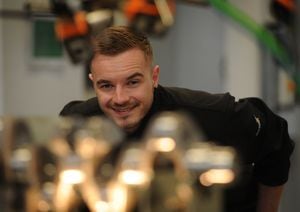
A group of two dozen business people from the Black Country Chamber of Commerce were among the most recent visitors, as part of the Black Country Business Festival.
They were shown the technological tweaks that aim to make the Ingenium engines cleaner and more efficient than their rivals.
But even more impressive is the scale of the factory, and its cleanliness. For those more used to dusty, oily factory floors, the EMC is a revelation. Spotless grey floors and white walls surround £200 million of hi-tech production machinery, from washing machines to keep components clean and bright orange robotic arms to overhead production lines moving parts through the various stages of production.
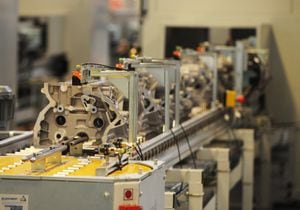
The machining hall produces steel crankshafts and aluminium cylinder heads and cylinder blocks for both engines types, all balanced and machined to an accuracy measured in tens of microns – less than half the width of a human hair.
Among the JLR team working in the machining hall is 25-year-old Jamie Mattison, a member of the second wave of apprentices taken on at the factory five years ago.
He is now a team leader on the crankshaft line. "Five years might seem a long while, but it's been so fast paced. Working here has brought things out of me I didn't know I could do. And when I meet up with old friends from school, working at Jaguar Land Rover does give you some bragging rights.
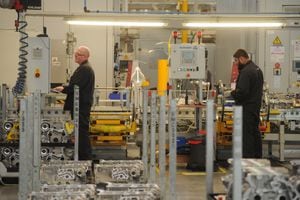
"I'm originally from Cheslyn Hay, but working here has allowed me to buy a home in Wednesfield and last year, after i completed my apprenticeship, I got engaged.
"I just think I've been so lucky. There were 10,000 people applying for one of the apprenticeships here the year I got through. This year there were 38,000."
The automation makes the machining hall seem almost empty. Just 50 people work here at any one time, with three shifts a day.
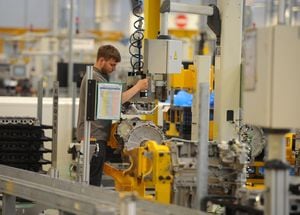
Another 150 each work at the two assembly halls where the diesel and petrol engines are put together, operating two shifts a day at present.
More people work in the offices, while around 400 are employed by companies working for JLR, such as its supply chain company Synchreon.
It is their job to ensure the factory has all the parts and components it needs to keep manufacturing rolling day and night. If the supply chain were to fail, the company held responsible would face having to pay up to £3,000 for every minute that production was halted. It doesn't happen very often.

Down a short corridor from the machining hall is the first engine assembly hall, making four cylinder diesel engines. With three times as many people it is a far busier place, as workers man the 800 metre long production line moving the engines around as components are added, such as bearings, cylinders, wiring harnesses and oil sump plans.
Continual testing of the components and the engines goes on throughout the production process, with a final 'hot' ignition test of one in four completed engines before they are rolled out to waiting lorries to be transported to car production lines at Halewood, Castle Bromwich or Solihull. The Ingenium engines are now part of every model range offered by Jaguar Land Rover, except of course the new all-electric i-Pace.
The petrol assembly hall next door operates in the same way as the diesel hall, with the blocks, heads and crankshafts from the machining hall put together with the hundreds of other components needed to produce a complete engine. It has just marked its first full year of petrol engine production.
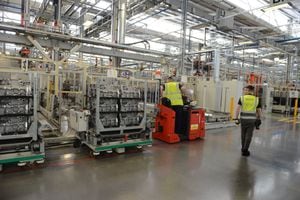
But the site contains a mystery. What is going on inside the 1m sq ft extension completed last year? No-one at Jaguar Land Rover is saying, although an announcement is expected in the third quarter of this year.
The site is already producing engines for use in JLR's new hybrids, such as the new Range Rover Sport.
The likely answer is that the new factory area will be making bigger six and eight cylinder Ingenium engines, taking over from the Ford production line at Bridgend. Ford, has been making around 145,000 JLR engines a year, has confirmed the contract is due to end in 2020.
However, the clever design of the Ingenium engine means it could come down in size as well as go up.
So it could mean the site making 1 litre or 1.5 litre engines for a smaller, as yet unseen, new generation of Jaguars and Land Rovers.
Whatever happens, it is certain to mean more work and many more jobs at the EMC in Wolverhampton.


